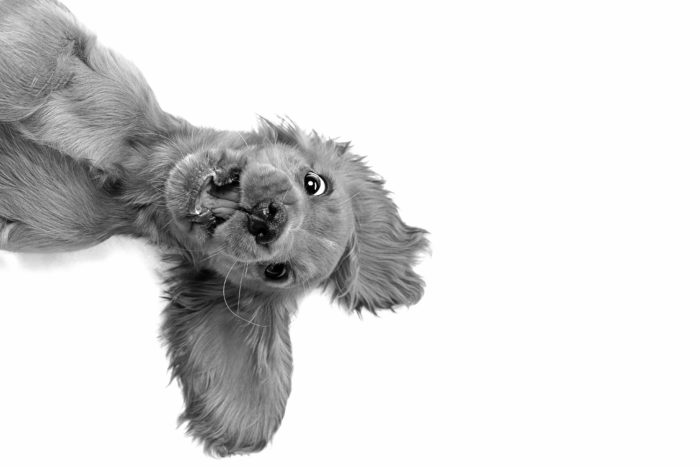Natural Distractions
The details: A natural distraction is one that you have no control over; traffic, people, other dogs, or cats or squirrels that you encounter on the street.
Staged Distractions
Some examples of distractions that you are able to create yourself; noises, rolling or bouncing balls, family members moving quickly, clapping, singing, or acting silly. Be careful not to scare the pup or make the challenges too difficult for him.
Your puppy has a very short attention span and will tire easily.
The Attention Span Thing
Your puppy has a very short attention span and will tire easily. Keep the training sessions short. Always end each session on a high note, with some kind of success, perhaps followed by a short game or by handing over the “jackpot” of treats left in your pocket.
Feedback + Timing
Feedback is the foundation of successful training. It is the information that you give your puppy about what they are doing (acceptable or unacceptable behavior). The feedback that you give your puppy will have an impact on the likelihood of whether or not you will get the desired behavior, whenever you ask for it. The effectiveness of your training is directly related to your feedback and timing.
For example, if your puppy sits before walking across the street, you will let that puppy know that he has done something that you like (acceptable behavior) give that pup a tasty treat! Say you call your puppy to come to you. When he gets there you respond by clipping his nails (the human equivalent would be a friend inviting you over and then surprising you by pulling out their taxes and asking for help). This is not the kind of feedback that will keep your puppy coming to you quickly and reliably for the course of his life.
The odds of your puppy repeating a behavior that he is ‘reinforced’ for (treat, toy, game) will be high. By giving our puppy timely feedback in the form of immediate reinforcement (food, toy, game), we are increasing the likelihood of the pup repeating that behavior.
Feedback is the foundation of successful training.
The details of timing is the speed at which you give the puppy feedback. If you are too late with the feedback you could very easily reinfoce the puppy for something that you did not actually want more of. For example, a friend comes to visit. You ask your puppy to sit. The puppy responds quickly, you struggle to dig for a treat. By the time you have come up with a treat for the puppy, he is in mid-air jumping up to say hello to your friend. In essence, you are reinforcing the pup for jumping up, not for sitting.
It takes patience and practice to be timely with your feedback. Just being aware of the importance of it will be a benefit to you. This should inspire you to always have food on you to become quick-on-the-draw with your treats.
Tone of Voice
Keep your tone of voice in mind when you are working or playing games. When you ask your pup to do something such as sit or down your tone should be calm and flat. When you praise, your voice should sound positive. You can afford to get slightly more animated here, although too much and you risk over exciting your pup, causing him to become distracted from what you are teaching.
Whether you are playing games or working, you can use your voice to excite or calm your puppy. Avoid too sing songy or too militant a tone.
The Verbal Cue
In the early stages of luring your pup into the sit, down, or stand positions it is not necessary to use a verbal cue. Once the puppy becomes adept and reliable with the movement, you can add the cue.
Tips to remember
- Keep sessions short.
- End on a positive note.
- It is best to train when your puppy is hungry, not stuffed after a meal but not famished either.
- Release often with enthusiasm and short games.
- Use a variety of tiny pieces of delicious smelly treats.
- Remember to think about your feedback and your timing.
- Have realistic goals and expectations. Start small and work up to more challenging exercises.
- Make training a part of everyday routine, not a chore.
- You must be present and alert if you expect your pup to be.
- Keep your tone of voice in mind.

